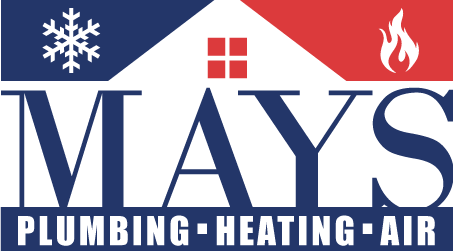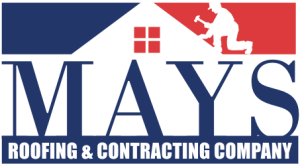How to Effectively Plan Your Roof’s Spring Cleaning Routine for Maximum Longevity
As winter transitions into spring, homeowners often overlook an essential aspect of property maintenance: the roof. This vital structure protects not just the building itself but its inhabitants, ensuring their safety and comfort. A thorough spring cleaning of your roof can significantly extend its lifespan and prevent costly repairs. Here’s how to effectively plan your roof’s spring cleaning routine for maximum longevity.
Assess Your Roof’s Condition
The first step in your spring cleaning routine is to assess the current condition of your roof. This assessment should ideally take place before you begin any cleaning tasks.
Visual Inspection
Use binoculars to inspect the roof from a distance. Look for missing shingles, discoloration, or any signs of damage such as cracks or holes. Pay special attention to areas prone to water accumulation. If it is safe, consider climbing up to conduct a closer inspection or hire a professional for a detailed evaluation.
Identify Growth Patterns
Early spring often brings growth, including algae and moss. These can form due to moisture accumulation, especially in shaded areas. Identify where these growths are prevalent. This will help guide your cleaning process and determine what treatments might be necessary.
Gather the Right Tools
Having the right tools can make the cleaning process efficient and effective. Here’s a list of recommended items:
- Roof Scraper: Useful for removing moss and algae.
- Broom: A soft-bristled broom will help sweep away debris without damaging shingles.
- Pressure Washer: Good for cleaning larger areas, but use it with caution to avoid dislodging shingles.
- Safety Equipment: Include harnesses, gloves, and anti-slip footwear.
- Chemical Cleaners: Look for specifically formulated roof cleaners that can combat algae and moss.
Establish a Cleaning Schedule
Once you are prepared, it’s time to develop a cleaning schedule. Planning helps ensure that you cover all necessary tasks without rushing or overlooking essential details.
Choose Optimal Weather Conditions
It’s best to clean a roof on a dry day when the temperature is moderate. Avoid windy conditions as they can make the job more dangerous. Aim for late morning or early afternoon when the sun shines directly on the roof, allowing you to see any grime or growth.
Frequency of Cleaning
Usually, a thorough roof cleaning should be conducted once a year. However, if your roof is shaded or in an area with heavy tree cover, consider cleaning it twice a year to prevent excessive algae and moss buildup.
Executing the Cleaning Process
Now that you have planned your cleaning routine, it’s time to execute it. Follow these steps for a thorough job:
Removing Debris
Start by removing leaves, twigs, and other debris. Carefully sweep or remove larger clumps to avoid damaging the roofing material. Always work from the top down to allow any remaining particles to fall to the ground.
Soft Washing Technique
For the areas affected by algae or moss, use a soft wash technique. Mix a solution of water and a specially formulated roof cleaner. Using a sprayer, apply the solution generously to the affected areas. Allow it to sit for 15-20 minutes to effectively kill the growths.
Thorough Rinse
After the cleaning solution has had time to work, thoroughly rinse the roof with water. If using a pressure washer, ensure you do so at a low setting to avoid damaging shingles. Rinsing properly ensures that no residue from the cleaning solution remains, which can lead to damage over time.
Post-Cleaning Maintenance
Once the cleaning process is complete, the work doesn’t stop there. Regular maintenance plays a crucial role in extending your roof’s lifespan.
Gutter Cleaning
Clean gutters regularly to prevent water from backing up onto the roof. Blocked gutters can lead to moisture infiltration, causing potential damage to both the roof and the home’s interior.
Regular Inspections
Conduct routine checks throughout the year to catch any issues early. Look for signs of wear and tear, missing shingles, and growth patterns. Early detection is key to preventing more significant problems down the line.
Inform Yourself About Common Issues
Being informed about the potential issues that can affect your roof ensures you stay ahead of problems.
Leaks and Water Damage
Leaks often result from damaged or missing shingles. Regular inspections will help identify these issues before they become serious. Consider using a moisture meter to monitor areas frequently wet from rainfall.
Algae and Moss Buildup
Both algae and moss can be detrimental if left unchecked. Algae typically appears as black streaks, while moss grows in patches. Solutions exist to both clean and prevent future growth.
Professional Help
Sometimes, the scope of roof maintenance may exceed your capabilities or comfort level. Hiring professionals to assess and maintain your roof ensures the job is done right.
When to Call a Professional
If your inspection reveals extensive damage, or if you are uncomfortable performing any of the cleaning tasks, it is wise to consult with a roofing professional. They can provide you with an accurate assessment and recommended solutions.
Choosing the Right Contractor
When selecting a roofing contractor, look for reputable companies with positive reviews. Ensure they are licensed and insured. Always ask for an estimate and compare quotes before making a decision.
Conclusion
Effectively planning your roof’s spring cleaning routine involves assessing its condition, gathering the right tools, establishing a cleaning schedule, executing the cleaning process, and performing regular maintenance. By following these steps, you contribute to the overall longevity and durability of your roof.
Remember, taking the time for proper maintenance not only prolongs the life of your roof but also ensures that your home remains a safe and comfortable sanctuary.
Author: STAFF HERE CLINTON
The CLINTON STAFF WRITER represents the experienced team at HEREClinton.com, your go-to source for actionable local news and information in Clinton, Laurens County, and beyond. Specializing in "news you can use," we cover essential topics like product reviews for personal and business needs, local business directories, politics, real estate trends, neighborhood insights, and state news affecting the area—with deep expertise drawn from years of dedicated reporting and strong community input, including local press releases and business updates. We deliver top reporting on high-value events such as the Festival of Discovery, Clinton Community Day, and performances at the Whitten Center Amphitheater. Our coverage extends to key organizations like the Clinton Area Chamber of Commerce and the Laurens County Historical Society, plus leading businesses in manufacturing and education that power the local economy such as Milliken & Company and Presbyterian College. As part of the broader HERE network, including HEREAiken.com, HEREBeaufort.com, HEREChapin.com, HERECharleston.com, HEREClinton.com, HEREColumbia.com, HEREGeorgetown.com, HEREGreenwood.com, HEREGreenville.com, HEREHiltonHead.com, HEREIrmo.com, HEREMyrtleBeach.com, HERENewberry.com, HERERockHill.com, and HERESpartanburg.com, we provide comprehensive, credible insights into South Carolina's dynamic landscape.




 Mays Contracting
Mays Contracting

